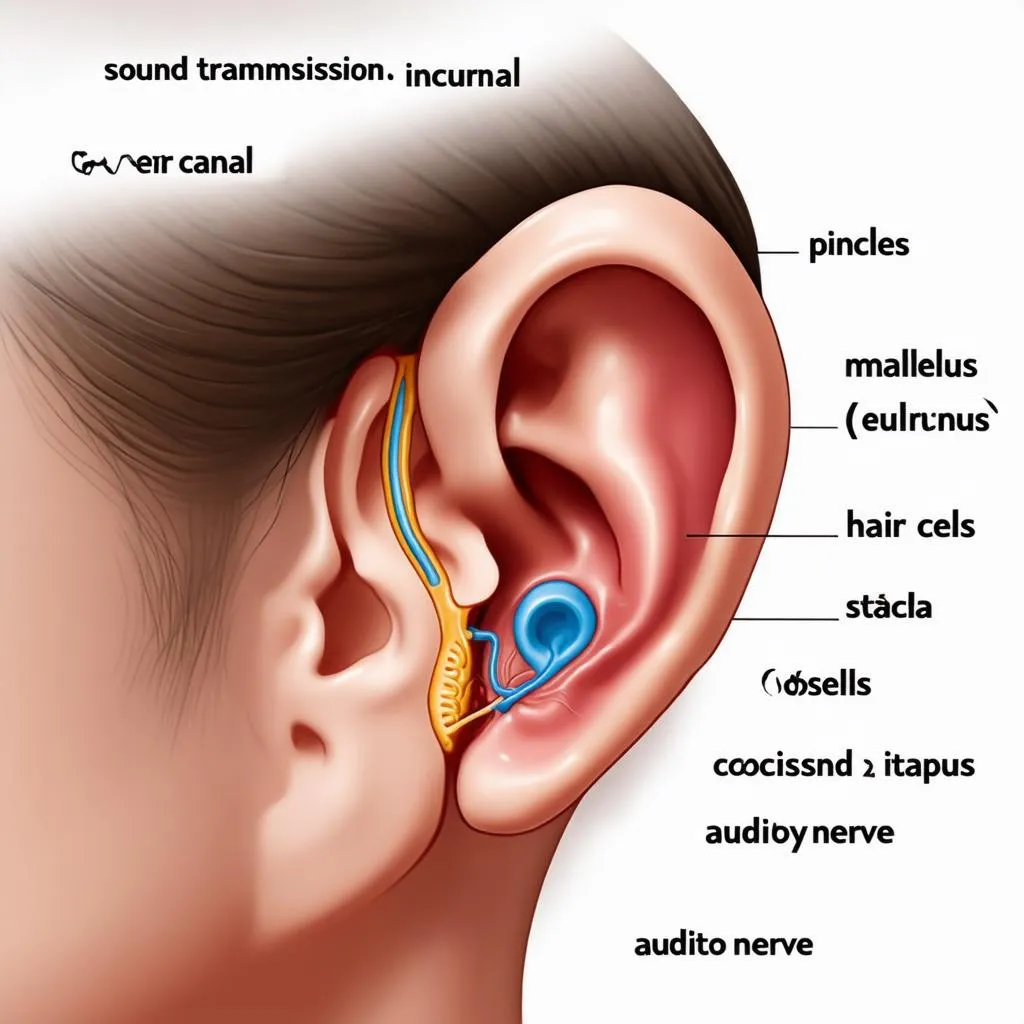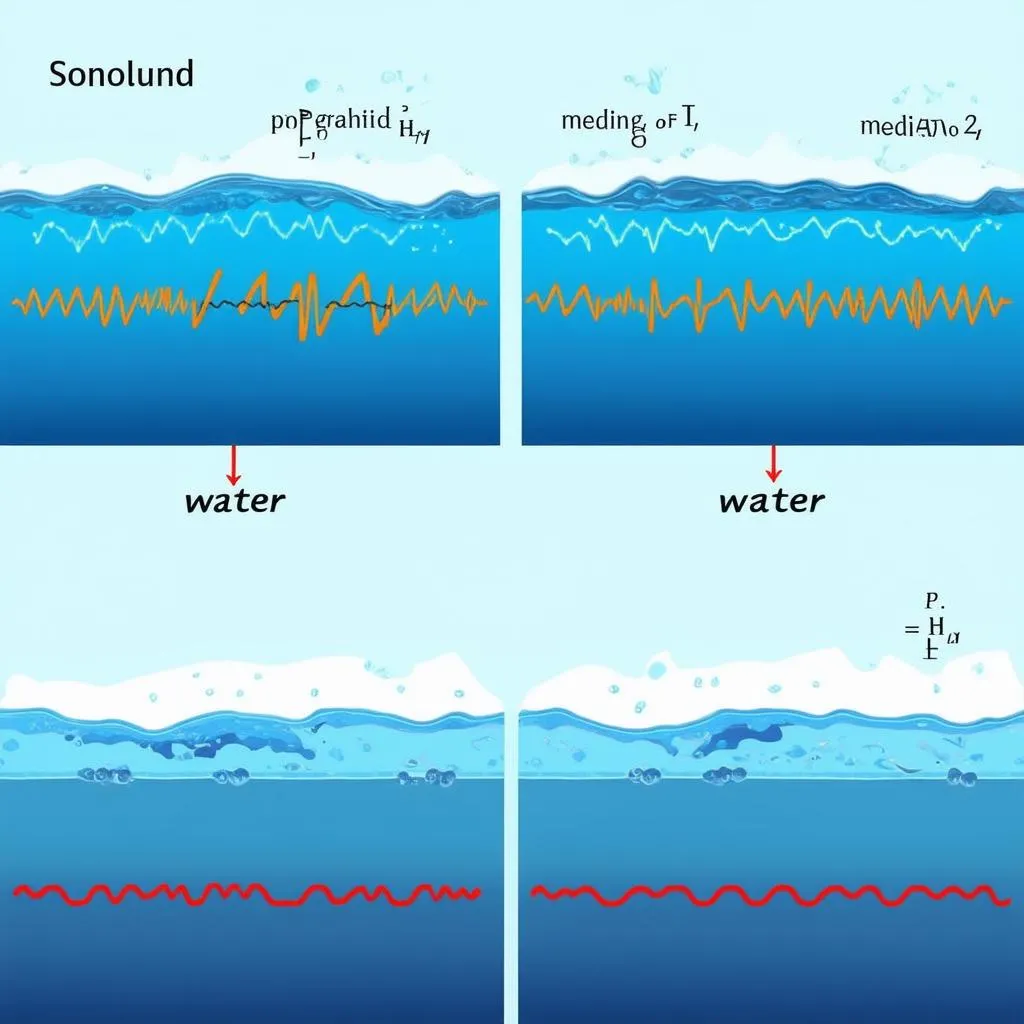Have you ever stood on the bustling streets of New York City, the cacophony of the urban jungle washing over you, and wondered how those sounds translate into the music, conversations, and noises you perceive? It’s a fascinating journey, a symphony of vibrations and signals that begins with a sound wave and culminates in our brains. Let’s dive into the intricate workings of the ear and unravel the mystery of how sound travels through this remarkable organ.
The Anatomy of Sound and the Ear
Before we embark on the journey of sound through the ear, let’s understand the nature of sound itself. Sound is essentially a form of energy produced by vibrations. Imagine striking a Tibetan singing bowl in a serene temple. The bowl vibrates, and these vibrations travel through the air as sound waves, much like ripples spreading across a pond.
Our ears are finely tuned instruments designed to capture these waves. The ear can be divided into three main parts:
The Outer Ear: Catching the Waves
- Pinna: The visible part of the ear, the pinna, acts like a satellite dish, collecting sound waves and funneling them into the ear canal. Think of it as the grand entrance to a concert hall, guiding the music towards the audience.
- Ear Canal: This tube-like structure channels the sound waves further inward, towards the eardrum.
The Middle Ear: Amplifying the Vibrations
- Eardrum (Tympanic Membrane): The eardrum is a thin, delicate membrane that vibrates when sound waves hit it.
- Ossicles: The eardrum’s vibrations are then passed on to three tiny bones in the middle ear: the malleus (hammer), incus (anvil), and stapes (stirrup). These bones act like a lever system, amplifying the vibrations received from the eardrum.
The Inner Ear: Transforming Vibrations into Signals
- Cochlea: This spiral-shaped, fluid-filled structure is the heart of sound processing. The amplified vibrations from the middle ear create waves in the cochlear fluid.
- Hair Cells: Within the cochlea, thousands of tiny hair cells sway in response to the fluid waves. These hair cells are connected to nerve fibers, and their movement generates electrical signals.
- Auditory Nerve: The electrical signals produced by the hair cells are picked up by the auditory nerve and transmitted to the brain.
From Ear to Brain: Perceiving Sound
Once the auditory nerve delivers the electrical signals to the brain, the magic of perception occurs. The brain interprets these signals as meaningful sounds – music, conversations, the chirping of birds, the roar of a waterfall.
Dr. Emily Carter, author of “The Sonic Symphony: Unveiling the Mysteries of Hearing,” explains, “The brain is incredibly adept at deciphering the complex patterns of electrical impulses coming from the ears. It’s a testament to the intricate connection between our sensory organs and the processing power of our minds.”
 Anatomy of the Human Ear
Anatomy of the Human Ear
Factors Affecting Sound Perception
Just as the ambiance of a travel destination can enhance or diminish the overall experience, several factors influence how we perceive sound:
- Sound Intensity (Loudness): Louder sounds create stronger vibrations, leading to more significant hair cell movement in the cochlea and thus, a louder perception.
- Frequency (Pitch): The number of sound waves per second determines the pitch. High-frequency sounds are perceived as high-pitched, while low-frequency sounds are perceived as low-pitched.
- Sound Duration: This refers to how long a sound lasts.
- Environmental Factors: Echo, reverberation, and background noise can all affect how we perceive sound. For instance, sound travels differently in the open spaces of the Grand Canyon compared to a bustling marketplace in Marrakech.
 Sound Waves Traveling Through Different Mediums
Sound Waves Traveling Through Different Mediums
FAQs About How Sound Travels Through the Ear
1. Why do my ears pop when I’m on an airplane?
The change in air pressure during a flight can cause a pressure difference between the middle ear and the environment. This difference can cause the eardrum to bulge inward or outward, resulting in the popping sensation.
2. Can loud noises damage my hearing?
Yes, prolonged exposure to loud noises can damage the delicate hair cells in the cochlea, leading to noise-induced hearing loss. It’s crucial to protect your hearing by wearing earplugs or earmuffs in noisy environments.
3. What is tinnitus, and why do I hear ringing in my ears?
Tinnitus is the perception of ringing or buzzing in the ears without any external sound source. It can be caused by a variety of factors, including age-related hearing loss, exposure to loud noises, and certain medical conditions.
Travelcar.edu.vn: Your Guide to Exploring the World’s Soundscapes
Are you fascinated by the diverse soundscapes our planet offers, from the rhythmic chants of Buddhist monks in Thailand to the hypnotic melodies of flamenco guitarists in Spain? At travelcar.edu.vn, we believe that sound is an integral part of the travel experience.
Check out our articles on the best destinations for music lovers, tips for protecting your hearing while traveling, and fascinating insights into how sound influences our perception of different cultures.
For those interested in exploring the science of sound and its connection to travel, be sure to read our article on “Do Waves Travel Faster in Denser Mediums?”
Let TRAVELCAR.edu.vn be your sonic compass as you journey through the world’s captivating soundscapes.
